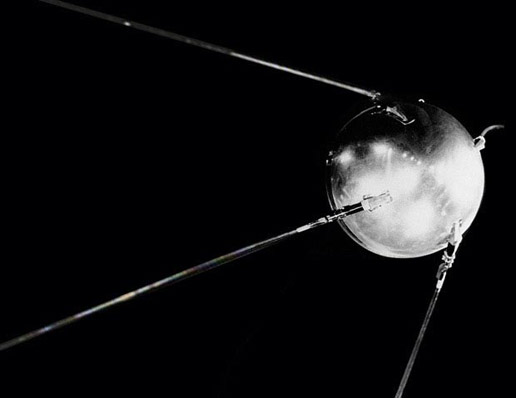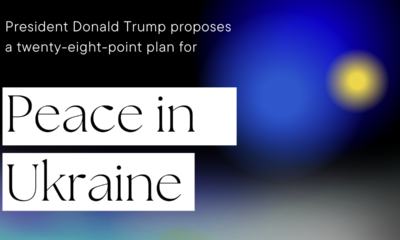Civilization
America Can’t Wait for a Sputnik Moment To Have a Sputnik Response

In Americans’ political memory, few peacetime moments carry the motivating power of Sputnik. As NASA put it back in 2007, “History changed on October 4, 1957, when the Soviet Union successfully launched Sputnik I.” Shocked by the Soviet’s capabilities, Americans mobilized industry, academia, civil society, and government to dominate the space race, land on the moon, and, ultimately, win the Cold War.
A Sputnik moment – when American institutions understand the risks of an outclassing foreign invention
Its perceived narrative power explains Sputnik’s frequent appearance in national security debates. In recent years, advocates have harnessed Sputnik to argue America faces grave risks from adversaries outpacing us in the race for 5G, hypersonic missile capabilities, space, and in industrial strategy in general. Earlier this year, national security commentators argued America is confronting a “Sputnik moment” with the disclosure that Russia is pursuing a nuclear, space-based anti satellite weapon system. In each of these instances, however, the American public demonstrated nowhere near the level of alarm triggered by Sputnik.
What explains this Sputnik gap? Are defense experts wrong about the magnitude of threat posed by recent adversarial developments? In some cases, yes. 5G technology, for example, is not analogous to Soviet rocket capabilities. But in other instances, such as the risk that China overtakes America in defense industrial development, the parallels seem much stronger. Yet even here, Sputnik is the wrong story for today.
Sputnik is the wrong story because the conditions that enabled America’s Sputnik moment no longer hold true. Sputnik is not a story about an adversary jumping ahead of America technologically, it is a story about American institutions, primarily the media and government, cultivating a shared understanding of the risks presented by such a development. This shared understanding is the critical piece: alerted to the grave dangers Sputnik presented, Americans across the political spectrum demanded action and both political parties competed to demonstrate leadership against the threat.
Three conditions that made the original Sputnik moment
There were three conditions that caused this shared sense of meaning to develop. The first was the information environment. In 1957, most Americans got their news from a fairly narrow set of sources, with CBS, NBC, and ABC dominating the information marketplace, especially with respect to national events. This made it more likely that Americans would have simultaneous, shared awareness of events–as noted in a 1958 Pentagon memo, a survey taken right after Sputnik showed 95 percent of Americans were aware of the satellite.
The second condition was the state of institutional trust. When Sputnik blasted into space, Americans, by and large, trusted the government. This meant that political events, such as Congressional hearings by the Senate Armed Services Preparedness Subcommittee launched after Sputnik, or leaked information from the Gaither report, a top-secret analysis of strategies for protecting the American population from potential Soviet nuclear attacks, could meaningfully influence public opinion.
The final condition was the national security context. Sputnik came just eight years after the Soviets detonated an atomic bomb, four years after President Eisenhower signed an armistice agreement in the Korean War, and less than a year after the Soviets brutally suppressed the Hungarian revolution. While Americans’ views towards the Soviet Union were far from monolithic, the public had a tangible sense for the Soviet’s capacity for violence.
The public outcry built gradually
These conditions enabled the Sputnik moment. Contrary to popular imagination, as noted by Douglas Brinkley in American Moonshot, there was relatively little outcry over Sputnik from the American public at first. But the chorus of fears and concerns about the state of America’s space and rocket programs, raised by political elites and covered extensively by America’s dominant news media, turned what might have started as curiosity into fear. That fear, set against over a decade of Soviet aggression, coalesced into a powerful shared understanding that the moment demanded resolute action.
Today, the conditions are dramatically different. Americans’ information environment is wildly diverse, deeply fragmented across ideological lines, and increasingly network-based (i.e., social media, group chats, etc.). Institutional trust is near record lows and highly polarized. And there is no foreign threat where Americans feel concern that is as visceral and widely shared as what they felt towards the Soviet Union in 1957.
This last point requires some additional explanation. It’s true that a majority of Americans today see China as the greatest threat to the country, but few feel national security is a top concern right now. This suggests that while Americans recognize China possesses the most concerning military and economic capabilities of any potential adversary, they do not feel the threat is imminent.
But today Americans don’t share any understanding of the risks
Consider that in President Eisenhower’s 1958 State of the Union (SOTU) address, he led off by noting “many Americans are troubled by recent world developments which they believe may threaten our nation’s safety…all know these dangers are real”. The Soviet threat was central to his entire message to the American people. In contrast, no foreign threat has catalyzed anywhere near as significant a response in recent years. President Biden mentioned China only briefly in his 2024 SOTU, for example. He gave greater attention to the threat from Russia, but here, although Americans broadly see Russia as a threat, there are internal divisions within the Republican party over the need to confront Russian aggression. .
So long as these conditions remain, and they do not seem likely to change anytime soon, America will not have a Sputnik moment. But we need a Sputnik response. Mackenzie Eaglen, a defense scholar at the American Enterprise Institute, recently published a report arguing China’s defense spending could be nearly on par with that of the US when taking into consideration purchasing power parity. Russia is gaining ground in Ukraine and growing increasingly menacing in its posture towards NATO. And American forces are regularly confronting drone and missile attacks in the Middle East. The magnitude and diversity of threats requires a transformational response comparable to what happened with Sputnik.
Does America need a Sputnik moment?
In 1958 this included creating NASA, passing the National Defense Education Act, and empowering the Secretary of Defense with greater authority to direct program funding. A contemporary Sputnik response would likely involve significant increases to the defense budget, upgrades to the nation’s science, technology, and manufacturing infrastructure, and a more tangible, public-facing effort to dominate our adversaries in space. This last piece is critical–an effective Sputnik response is one that not just delivers the capabilities America needs, but also makes Americans feel part of a story of success.
The good news is that America does not need a Sputnik moment to have a Sputnik response. Contrary to what one might think at this point, the intent of this article is not to lament the condition of American society. America is in so many ways a much stronger nation than we were seventy years ago. We have the most capable military in the world; we’re leading on artificial intelligence, the most transformational technology of our time; and however significant our internal divisions are, we are more cohesive, resilient, and dynamic than any of our adversaries. The key to harnessing these strengths is to build a shared understanding of the risks facing the nation using methods that fit the information and trust landscape today.
Top-down communications do not work
In a fragmented media and information environment, top-down communications do not work. We need campaigns that engage Americans as individuals, both online and in-real life, and invite them into the conversation. This is not about a single viral moment, but a steady build of individual and small-group moments that lead to demands for action.
In order to address people’s skepticism of institutional information, we need to work through trusted, non-governmental intermediaries such as local civic and business leaders, the myriad of places online people turn to for group chats and conversions, and new membership groups that are growing across the country. Importantly, the intent is not to have messengers push a specific narrative, but rather to have credible leaders pose questions, share information, and encourage their communities to discuss and eventually move towards actions. Perhaps now more than ever, Americans do not want to be told what to think, they want to arrive at a conclusion themselves.
Finally, as more Americans feel connected to national security conversations, we need to build pathways to transform public will into political influence. The end game for this movement is to compel policymakers across the ideological spectrum to see the political necessity of major investments in our national defense. This kind of multi-channel, networked campaign does not currently exist, but is needed to spur a modern-day Sputnik response.
Don’t let it distract us
Sputnik will always remain an inspirational story. It reflects much of what makes America exceptional, from the relentless pursuit of technological innovation to our profound belief in the transformational powers of education and self-improvement. But inspirational stories, when they no longer match the current context, can distract us from doing what works today to engage the American people. We do not need a single event to focus our attention, we need millions of conversations about the risks America faces, why they matter to us, and what we can do to overcome them.
This article was originally published by RealClearDefense and made available via RealClearWire.
Dan Vallone is founding principal at Polarization Risk Advisory LLC, where he advises clients on how to navigate risks from polarization and on how to communicate effectively in an era of media fragmentation and polarization. An Army veteran, Dan has led a variety of public-opinion studies on Americans’ attitudes towards the military. He writes regularly on issues of polarization and social cohesion in America and on methods for connecting the American people with the military. Dan is also currently a visiting fellow with the SNF Agora Institute at Johns Hopkins University.
-

 Civilization4 days ago
Civilization4 days agoDC Pipe Bomb Arrest Raises Questions About Christopher’s Wray’s FBI
-

 Civilization5 days ago
Civilization5 days agoThe Legal Logic Behind U.S. Operations Against Narco-Terrorist Networks
-

 Executive5 days ago
Executive5 days agoNewsom’s ‘National Model’ for Homeless Wracked by Fraud
-

 Executive4 days ago
Executive4 days agoWhen You’re in a Hole, Stop Digging
-

 Executive2 days ago
Executive2 days agoWaste of the Day: Obamacare Failed Test, Approved Fraudulent Subsidies
-

 Education3 days ago
Education3 days agoWaste of the Day: Taxpayers Subsidize Football Coach Severance
-

 Civilization3 days ago
Civilization3 days agoPence Calls on Trump To Fire RFK Jr Over Abortion Drug
-

 Executive4 days ago
Executive4 days agoWaste of the Day: Feds Pay Nonprofits That Sue the Government














